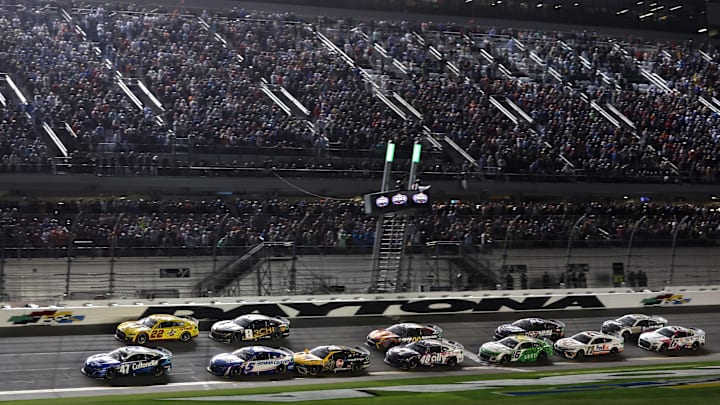RFK Racing recently confirmed that they plan to expand to three cars for the 2024 NASCAR Cup Series season-opening Daytona 500 at Daytona International Speedway in mid-February, doing so with the addition of the No. 60 Ford.
Veteran David Ragan, who did not attempt to qualify for last year's running of the "Great American Race", is set to attempt to qualify the No. 60 Ford. Last season marked his first season without any Cup Series starts since 2005.
However, because of the fact that the No. 60 Ford, unlike the team's No. 6 Ford for Brad Keselowski and No. 17 Ford for Chris Buescher, is not a chartered entry, it is not locked into the 200-lap race around the four-turn, 2.5-mile (4.023-kilometer) high-banked Daytona Beach, Florida oval.
There are 36 chartered entries which are locked in, and there are just four spots available for non-chartered entries. As of now, the No. 60 Ford is one of only two non-chartered cars on the entry list, but that is very likely to change, given that it is still early December.
Daytona 500 qualifying not a straight-forward process for NASCAR teams
Over the last few seasons, the Daytona 500 has been the only race for which there are more than four non-chartered entries going for the final four spots in the field, thus keeping at least one car out, and qualifying for this race in itself is unlike any other event on the calendar.
The non-chartered entries must qualify for the race in one of two ways: on speed in the single-car qualifying session, or in the Bluegreen Vacations Duels qualifying races.
The fastest two non-chartered entries in the single-car qualifying session lock themselves into the main event, and then the highest finishing non-chartered entries in each of the two Duel races do the same.
If a non-chartered entry effectively qualifies twice, then that entry's second spot will go to the next fastest non-chartered entry from the single-car qualifying session.
The two non-chartered cars that end up qualifying on speed line up on the final row in 39th and 40th place for the start of the race, while the two that lock in via the Duels have their starting positions determined by their finishes in their respective Duel race, just like the 36 chartered entries that are already locked in.
Among the 36 chartered entries, only the fastest two drivers in the single-car qualifying session do not need to worry about their Duel result, as they will have already locked out the front row.
It would not be surprising to see teams such as 23XI Racing, Kaulig Racing, or Legacy Motor Club, among others, do what they have done in the past and add entries for this event, thus bringing the entry list total to over 40. It also wouldn't be surprising to see one-off entries such as Beard Motorsports field a car like they have done in the past.
As of now, the only other non-chartered car on the Daytona 500 entry list is the No. 78 Chevrolet of Live Fast Motorsports, which is set to be driven by team co-owner B.J. McLeod. While McLeod and Ragan are on the entry list, they are not yet officially locked into the race itself.
The No. 78 Chevrolet had been one of the 36 chartered entries the last three years, but the team sold their charter to Spire Motorsports for roughly $40 million. They still plan to run a partial schedule in 2024, beginning at Daytona.
Spire Motorsports now have three chartered entries instead of two: the No. 7 Chevrolet for Corey LaJoie, the No. 77 Chevrolet for rookie Carson Hocevar, and the newly added No. 71 Chevrolet for rookie Zane Smith, who is set to compete for the team on loan from Trackhouse Racing Team. All three are locked into the Daytona 500.
